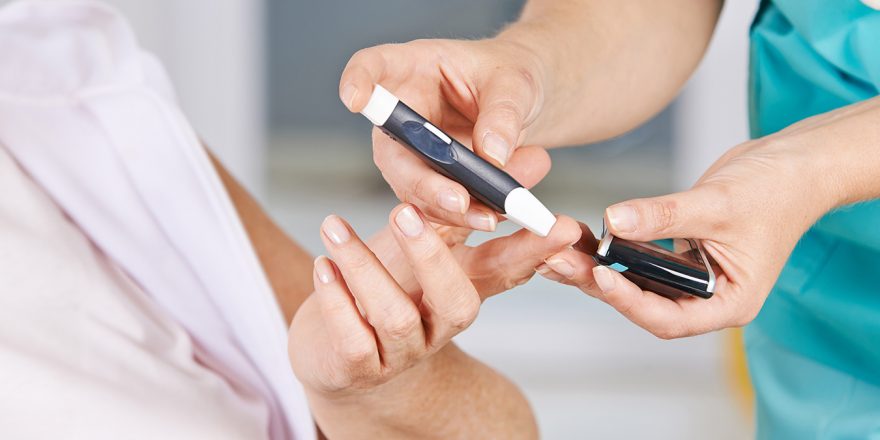Key Points:
- Gestational Diabetes Mellitus (GDM) is the first onset of diabetes or glucose intolerance during pregnancy.
- Patients with GDM, if unrecognized, the pregnancy may end in the prenatal death or fetal wastage
- All pregnant women should undergo screening for GDM.
Diabetes is a major medical complication of pregnancy and is associated with an increased risk of maternal and prenatal morbidity and mortality. It is estimated that diabetes complicates between 1 and 20% of all pregnancies worldwide. Gestational Diabetes Mellitus (GDM) is defined as the first onset of diabetes or glucose intolerance during pregnancy. GDM has become one of the common health problems affecting pregnant women today. Recent research indicates that between 10-20% of all pregnant women in urban areas in India have GDM.
GDM is not only associated with increased morbidity during the pregnancy but also increases the likelihood of subsequent diabetes in the mother and development of obesity and diabetes in the offspring. Thus GDM puts both the mother and child at risk. It is important to detect patients with GDM, because if unrecognized, the pregnancy may end in the prenatal death or fetal wastage. Therefore, screening for GDM is very essential. Ideally all pregnant women should undergo screening for GDM. However, as it is practically difficult at least the high-risk individuals should be screened for GDM.
Risk Factors:
Women with any of the following characteristics are at increased risk of being diagnosed with gestational diabetes, compared to women without any of these characteristics:
- Family history of diabetes
- History of unexplained prenatal loss [death of baby from 7 months of pregnancy to few days after birth
- History of having given birth previously to a very large infant, a still born child, or a child with a birth defect
- Obesity or overweight
- Having too much amniotic fluid (polyhydramnios)
- Women over 25 years of age
- Hypertension
- Sedentary lifestyle
- HDL Cholesterol less than 35 mg/dl
- History of polycystic ovarian syndrome
Diagnosis of GDM:
Gestational diabetes is diagnosed with a blood sugar screening test and the best test to do would be an Oral Glucose Tolerance Test [OGTT]. The World Health Organization (WHO) has proposed that if the plasma glucose concentration is above 140mg/dL, 2 hours after a 75 gm glucose load, a diagnosis of GDM should be made.
How Diabetes in Pregnancy Affects the Mother and the Baby:
Infants of mothers with gestational diabetes are vulnerable to several complications, but the commonest are:
- Macrosomia: Refers to a baby that is considerably larger than normal.
- Hypoglycemia: Refers to low blood sugar in the baby immediately after delivery.
- Miscarriages (abortions), stillbirth, baby with heavy birth weight, hypotrophic infants, and small for dates, children with lethal or handicapping congenital malformations
In addition, a lady with GDM may develop recurrent urinary tract infections, hydramnios, toxaemia etc.
Management of gestational diabetes
Management of diabetic pregnancies (if diagnosis is known before the pregnancy) should ideally begin before conception and requires a close collaboration between obstetricians and diabetologists. Assessment and management of associated disorders such as retinopathy, nephropathy, and chronic hypertension are required. In the case of GDM, the traditional management approaches include a combination of diet, exercise, intensive insulin regimens and home blood glucose determinations.
Specific treatment should be determined by a physician based on:
- Age, overall health, and medical history
- Severity of the disease
- Exercise to be modified as required
- Meal plan & basic nutrition recommendations: A total calorie intake of 30-35 cal/ kg body weight is usually prescribed with adequate protein and fibre in the diet.
- Importance of blood glucose monitoring and control: Maintenance of normal glycemic status before conception and during pregnancy is essential to prevent fetal complications and for good outcome, since the organogenesis is completed by 6th week after conception, at a time when most of the women are not even aware of their pregnancy.
- Maintenance of fasting blood glucose level below 95mg and post prandial blood glucose below 120mg is ideal for good fetal outcome. Fructosamine assay gives information of the glycemic control over the previous 1-3 weeks and Glycated haemoglobin (HbA1c) is a test which gives information of the glycemic control during the previous 2-3 months.
- Insulin injections: Usually oral hypoglycemic tablets are withdrawn and insulin is introduced since tablets [medicines] can cross the placenta and stimulate the fetal β cell and may produce hypoglycemia in neonate. However more recently, some diabetologists do use tablets such as Metformin or Sulphonylurea agents to treat GDM.
In summary, with improved blood sugar control, GDM is no longer a disease to be feared. However, close follow-up with a diabetologist and Obstetrician is needed to ensure a successful outcome.





6 thoughts on “Gestational Diabetes Mellitus”